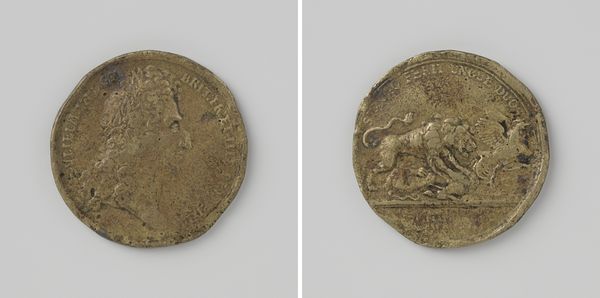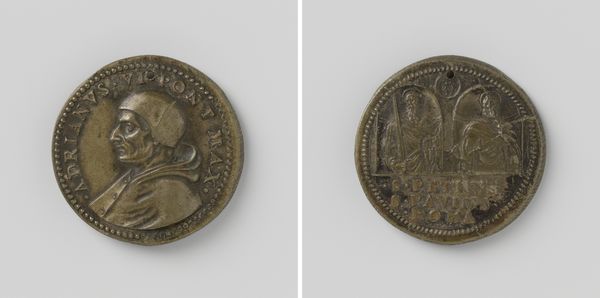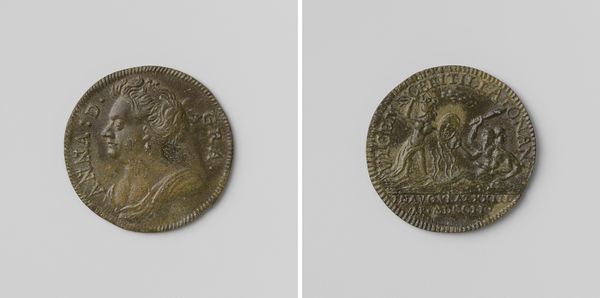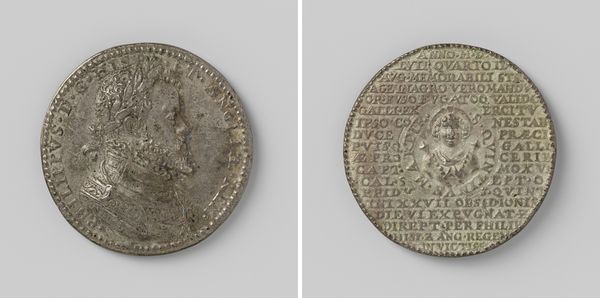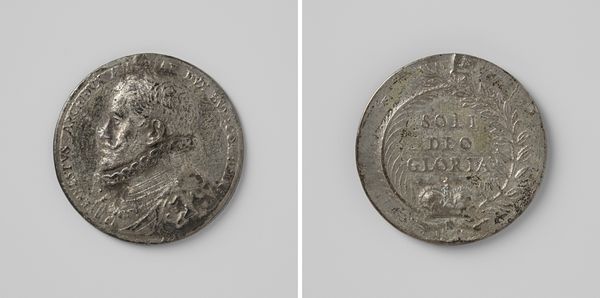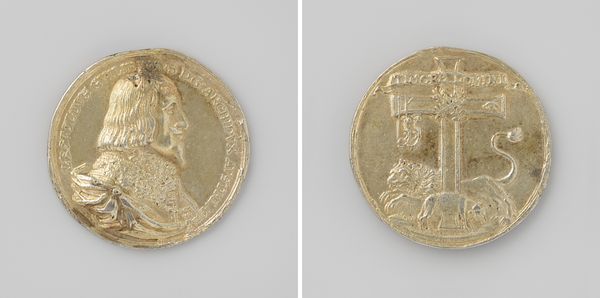
Dimensions: diameter 4.2 cm, weight 313 gr
Copyright: Rijks Museum: Open Domain
Curator: Here we have a fascinating guild badge: the "Metselaarsgilde van Vlissingen, gildepenning met no. 20", crafted in 1639 by Johannes Looff. It's a small, circular piece, made of metal, featuring intricate reliefs on both sides. What strikes you about it? Editor: Initially, its muted gold color suggests an era of secrets, power, and perhaps rigid hierarchy, doesn’t it? It looks serious; even stern. The texture is rich and conveys solidity, while its diminutive scale conveys intimacy and close-knit alliances, doesn’t it? Curator: Yes, certainly. One side displays what appears to be a crowned vase or urn flanked by tassels. The crown perhaps represents royal patronage or the guild's own sense of sovereignty within their craft. And vases frequently allude to vessels for both mundane uses and also more symbolic meaning – containers for sacred liquid, vessels of community, perhaps. The inscriptions on the perimeters echo a specific identity of an association bound in space and time. Editor: And flipping to the other side, the tools of the trade become the emblems of collective labor and a means of self-definition. The hammer, trowel, and level speak to their practical expertise. While a prominent arrow rising vertically implies perhaps reaching great heights, upward aspirations as well as a patriarchal ideology embedded in craft and skill passed down within guilds across generations of mostly men. How exclusive were such institutions then? Curator: Guilds held tremendous sway, not just economically but socially. Think of them as unions mixed with fraternities and training academies. They guarded skills and controlled markets, maintaining standards and hierarchies meticulously, although clearly along very gendered lines as you imply. In many ways, this badge shows the pride members had in their craft, which provided more than livelihood—a sense of belonging and identity. The presence of ‘no. 20’ implies a systematic structure to this membership that seems deeply entrenched. Editor: Viewing such an object through the lens of labor history prompts necessary conversations on class structures in seventeenth-century Netherlands, especially if it's located in Vlissingen, which witnessed booming shipping economies at this time. I'm also drawn to consider where the laborers who constructed these buildings were placed in this social strata compared to the leaders and master artisans. What did it mean to participate within this guild and where does its influence begin and end for a burgeoning, global trading port city such as this one? Curator: Indeed. It invites precisely these questions of socio-economic standing and visibility within complex urban infrastructures. The images function not only as markers of affiliation, but testaments to social stratification and economic imperatives that underpin craft and culture. Editor: What a fascinating glimpse into the symbolic world of labor and power dynamics embedded within a single, gilded object. Curator: Absolutely. And such tokens remind us how much cultural meaning can reside within what might seem like the simplest of forms.
Comments
No comments
Be the first to comment and join the conversation on the ultimate creative platform.

